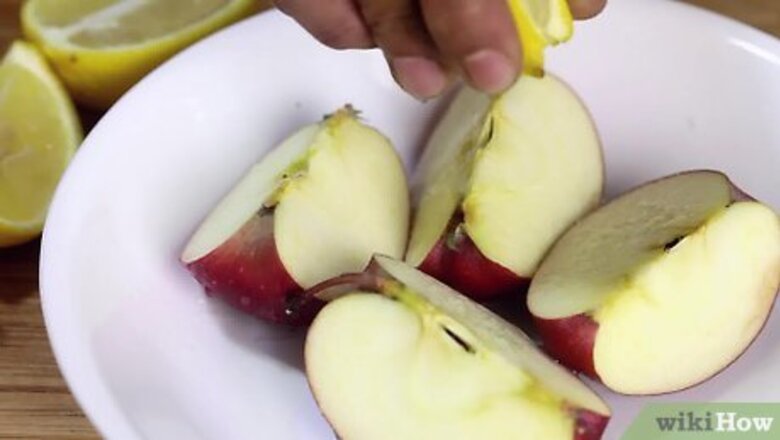
views
Preventing Oxidation
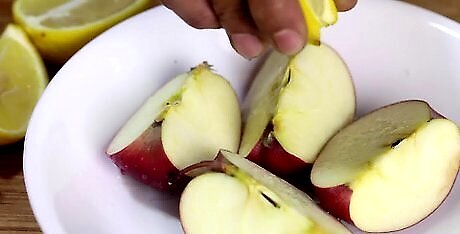
Use lemon juice. Apples turn brown due to an enzyme in the fruit that reacts with oxygen in the air. This process is known as "oxidation." Lemon juice works to prevent oxidation as it contains citric acid, which is an effective anti-oxidant. You can use either freshly squeezed or reconstituted lemon juice, though it may be best to only use this method on sweeter types of apple, as the lemon juice will add tartness. To use lemon juice to stop your cut apples from turning brown, you can use one of two methods: You can also use lemon to prevent browning by soaking the apple pieces in a bowl of cold water and lemon juice. You should use a ratio of one tablespoon of lemon juice to one cup of water. You only need to soak the apple for 3-5 minutes, before draining and rinsing. Lime juice can be used in place of the lemon juice in these methods, as limes also contain the citric acid necessary to prevent oxidation. Pineapple juice is another good option.
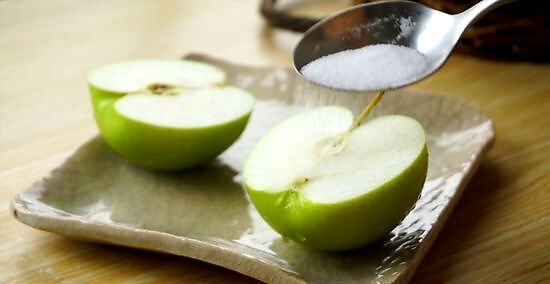
Use salt. Salt is a natural preservative and can be effective in keeping cut apples from turning brown. Sprinkle Kosher salt over a plate of cut apple slices using a kitchen tablespoon. To ensure your apple slices do not taste salty, do not use much more than a tablespoon's worth of salt. The apple slices should remain unoxidized for some time. Don't worry about your fruit tasting salty - as long as you don't use too much salt your fruit will taste just fine.
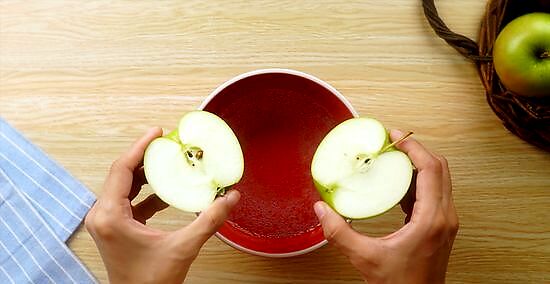
Use carbonated drinks. Carbonated drinks which contain citric acid can also be useful for preventing your apples from turning brown. Lemon-lime soda and ginger ale are two popular options which can be used to soak your cut apples. Simply pop the apples in a bowl of your chosen carbonated drink for 3-5 minutes, then drain. You can rinse the apple pieces, if you like, or leave them if you enjoy the added flavor! Seltzer water is another option that supposedly works to prevent apples from browning, so you can also give that a try if you have some lying around!
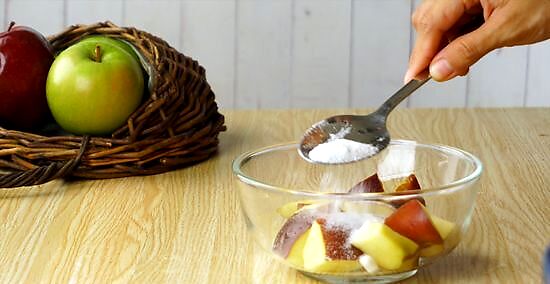
Use Fruit-Fresh. Fruit-Fresh is a powdered form of citric and ascorbic acids which is specifically designed to prevent fruit from turning brown. It claims to prevent food from browning for up to eight hours, and can be found in the canned goods section of most grocery stores. To use Fruit-Fresh, all you need to do is sprinkle half a teaspoon of the powder per cup of chopped apple and toss to coat.
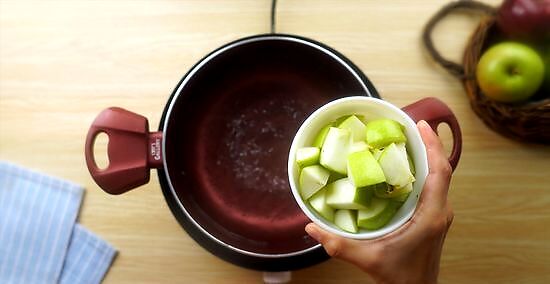
Blanch the apples. It is possible to blanch cut apples to prevent them from browning. Blanching basically deactivates the enzymes in the apple, preventing them from reacting with oxygen in the air. To blanch your cut apples, simply place them in a pot of boiling water for approximately five minutes, then remove and rinse with cold water. Be aware that using this method will significantly soften the texture of the apple, making it less suitable for eating on its own. As a result, this method is best reserved for apples that you plan on using in cooking or baking.
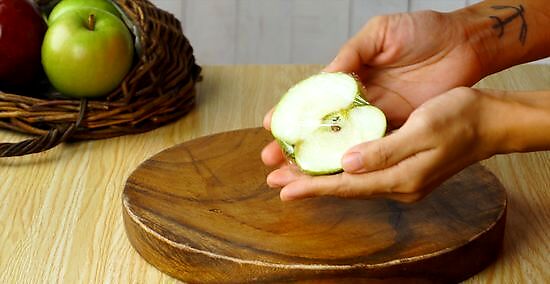
Cover in plastic wrap. A very simple method you can use to prevent apples from browning is just to cover the cut apple with plastic wrap. This technique works by keeping the air away from the apple flesh, thus preventing the apple flesh from oxidizing. Try to wrap the plastic around the apple as tightly as possible and avoid having any creases in the plastic wrap on the exposed side of the apple. This method works best with half of a whole apple, rather than several pieces, as it is easier to wrap the plastic tightly around a single piece. Be aware that if any air at all remains inside the plastic wrap, the apple will begin to oxidize. As it is very difficult to eliminate all air, this method may not be the most effective.
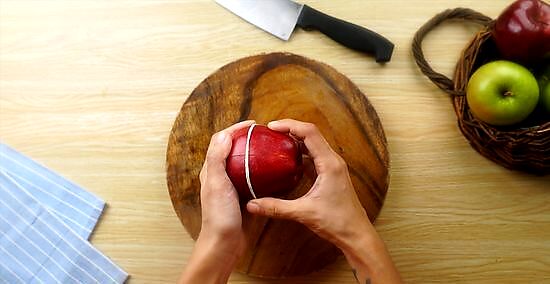
Use the rubber band method. The rubber band method is an innovative, yet easy way to prevent your apple from browning, though it can only be used with an entire apple that has been cut into slices, with the skin left on. This method works as it leaves none of the apple's flesh exposed to the air. Simply cut the apple up into regular sized slices, then piece it back together like a jigsaw until it resumes its original form. Wrap a rubber band around the apple, so it looks like it has never been cut. This is a good option for people who like to bring cut apples to work, or send them in their kids' school lunches.
Other Considerations
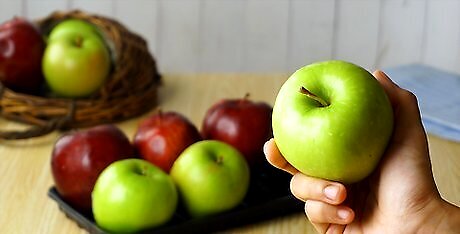
Choose your apples wisely. Certain types of apples are more prone to browning than others, so if you're planning on cutting up your apples, go for kind less inclined to brown. Studies conducted on the browning of apples revealed that: "Arangeh tend to brown the least. Granny Smith and Golden Smoty apples also showed minimal browning. Golden Delicious apples were in the middle, and Red Delicious apples browned the most."
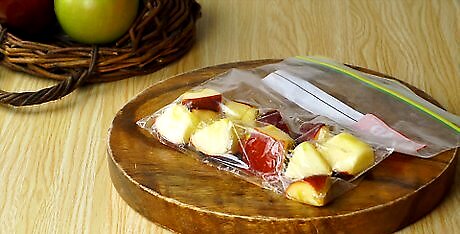
Store the cut apples correctly. The best way to store cut apples (after using one of the preservation methods listed above) is to place the apple slices in a ziploc bag, seal the bag three-quarters of the way, and draw the air from the bag with your mouth before sealing. Place the bag in the refrigerator until you are ready to eat or serve the slices. They will stay remarkably fresh and crisp.
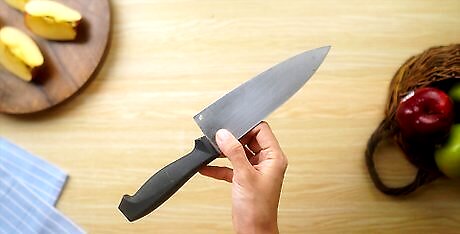
Use a clean, good-quality knife. If the knife you're using is old, it may be corroded by organic acids and leave deposits of iron salts on the cut fruit. These iron salts can significantly speed up the oxidation process, causing your apple to brown much faster. This is why using a clean, high-quality knife is important in helping to slow down the oxidation process.
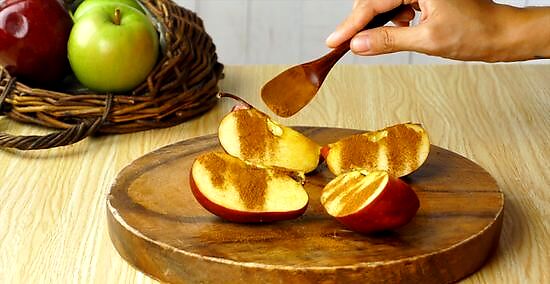
Disguise the browning. If it's already too late for your fruit this time round, you can attempt to disguise the browning somewhat by sprinkling a little cinnamon on the cut sides of your apple. The flavor of the cinnamon will complement the taste of the apple nicely, while its reddish-brown color may help to disguise the browning. Cinnamon is also a mild antioxidant itself, so a light sprinkling will help to prevent any further browning.
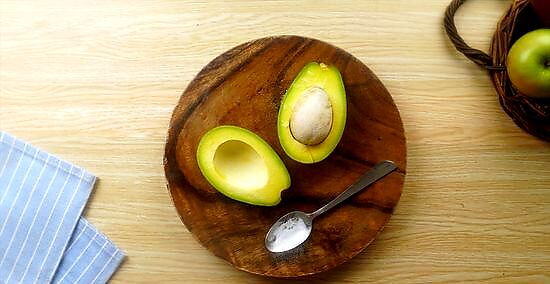
Use the same methods for other types of fruit. These methods are not reserved for apples alone, they can be used with any type of fruit that is prone to browning, including bananas, pears, peaches and avocados.




















Comments
0 comment